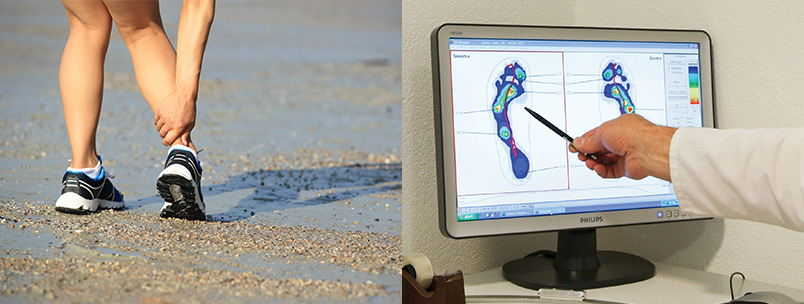Biomechanical Assessment
At a Biomechanical appointment your gait and biomechanics are evaluated by one of our Podiatrist and this will allow us to identify any movement patterns from how the foot is functioning that is likely to cause any problems that may lead to injury, discomfort or inhibited gait.
Some conditions that can be linked to how your foot functions could be:
Lower limb pain
Lower back discomfort
Hip or knee pain
Shin pain/splints
Tendon problems
Foot, ankle and heel pain
Ankle ligament sprains and instability
Arthritis of the foot and ankle
Recurring or chronic muscle injury
During the assessment a fully state registered podiatrist will take a detailed history and discuss your needs or requirements. The podiatrist will then need to look at your lower limb. It would be a good idea to wear shorts or loose fitting trousers that can be rolled up so the podiatrist can see all of the lower limb. The podiatrist will then need to see you standing, walking and in some cases running. The podiatrist may use a computer aided foot pressure plate system to pick up the pressures running through the foot. This will help examine and analyse the forces placed through the feet and will assist in the diagnoses. Click here for more information on the computer aided foot pressure plate.
Depending on the diagnosis orthoses may be issued and this will be discussed with you at the time of the appointment. Orthoses collection and follow up will be discussed at this stage as well.
Some common conditions that can be treated.
Bunions?
A bunion is a deviation of the big toe joint where the toe moves at an angle towards the lesser toes which gives the appearance of a bony lump on the side of the big toe joint. It can also be swollen around the joint which can be painful in some cases. Callus or hard skin can also be present around the joint. The second toe can also be effected with the toe clawing or hammering due to the pressure of the big toe deviating.
Bunions can be painful and have varying degrees of angles at the big toes. They can also make fitting shoes difficult due to the changes in shape of the foot. They tend to be more common in women then men. Some of the causes can be hereditary and/or your gait pattern (the way you walk)
Flat footed?
Low arch, fallen arches or flat footed? You ve all probably heard of these terms but these terms are generally mean that the feet are over pronating.
Pronation has a bad reputation within podiatry! But the right level,of pronation is good as it allows the foot to absorb shock but over pronation can contribute to lower limb discomfort. Pronation is the rolling in off the foot which in the right level is good but too much can lead to foot pain or lower limb pain such as shin knee or hip pain.
In both of these cases a non surgical approach is usually recommended as the first line of treatment and can be provide by correcting the biomechanics of the foot and can be corrected by the provision of insoles or Orthoses.
If you would like further information on advice on bunions or being flat footed and getting treatment for any pain or discomfort you may be experiencing please do not hesitate to get in contact with Foot Clinic Wales.

Contact us today
For further information on biomechanical foot and ankle assessments call Foot Clinic Wales on 07515636531 or get in touch by email or by using the website contact form.


